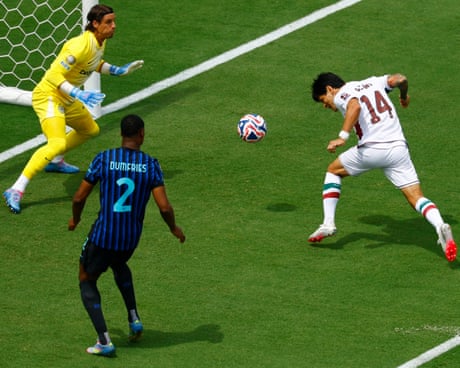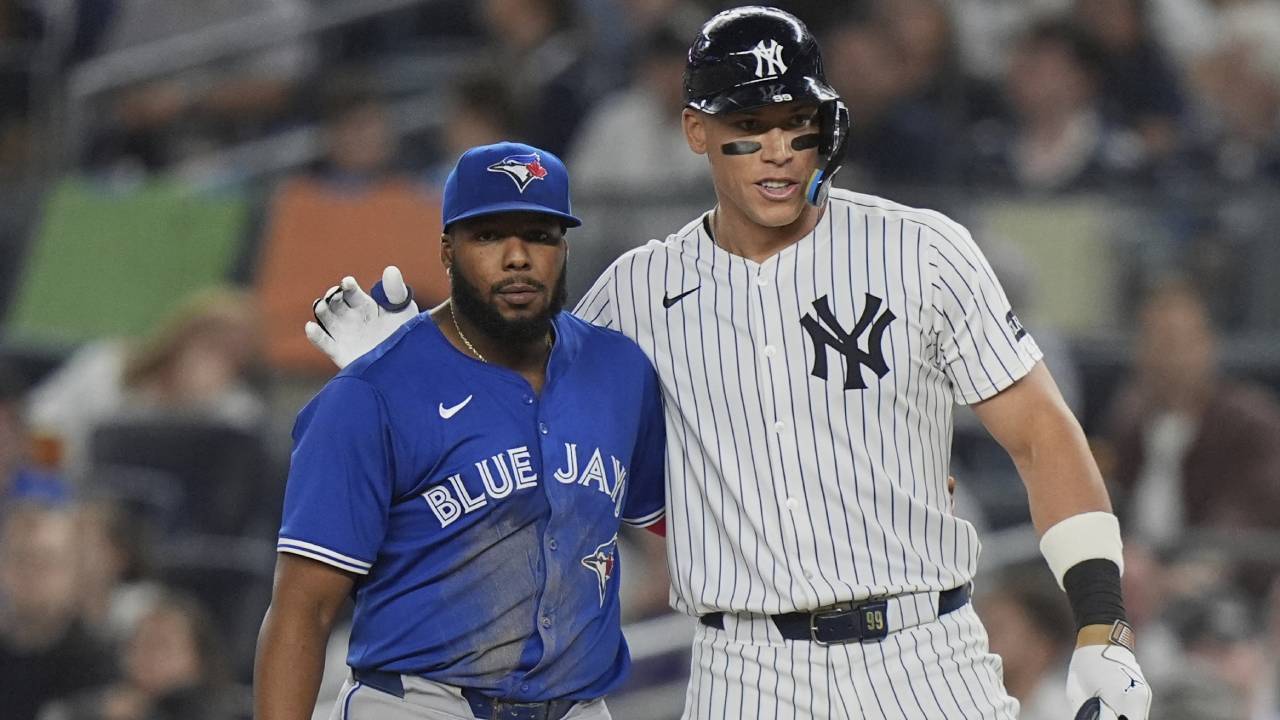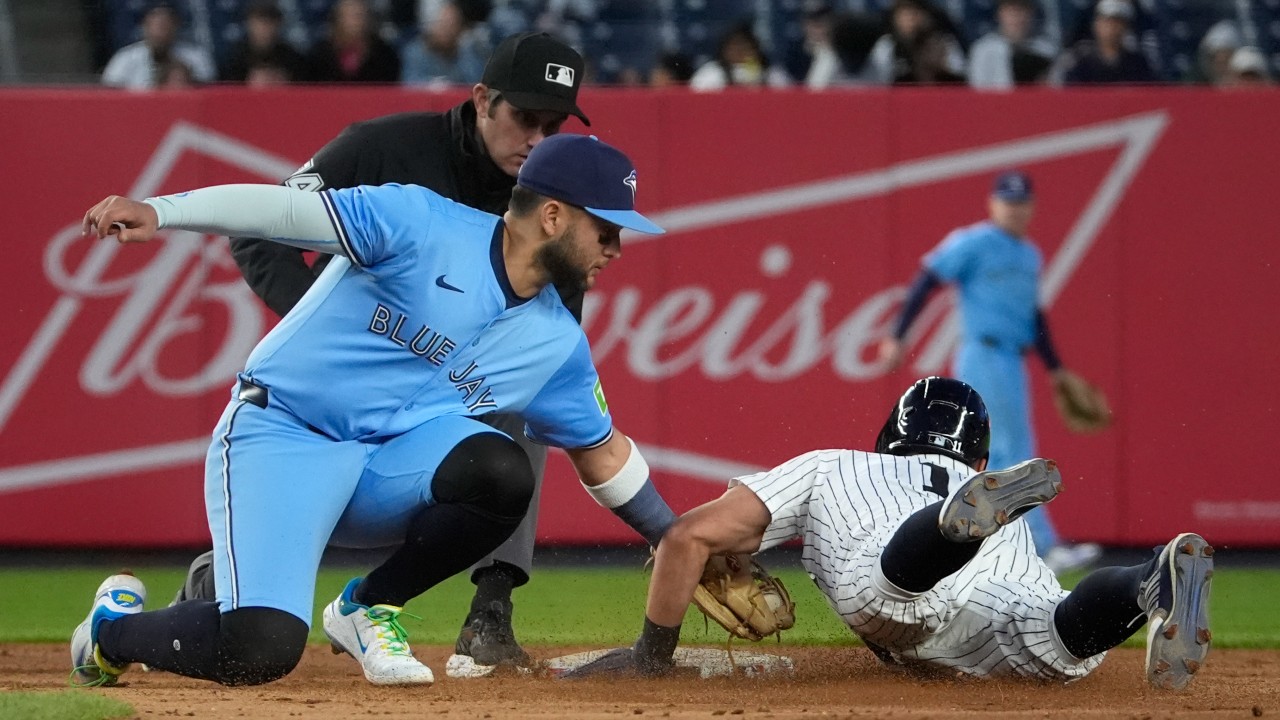
On Wednesday, Robbie Ray started for the Toronto Blue Jays and motored through four innings of one-run ball against the New York Yankees. Back out for the fifth, he walked the first batter and allowed a single to the next. He was beginning his third trip through New York’s order. He’d thrown 90 pitches.
Not that long ago, there wouldn’t be a hint of removing Ray from that outing. He’d been solid through four and was facing a jam. You let the guy work out of it. But that’s not how modern teams think. Toronto’s manager, Charlie Montoyo, knew where Ray was in the order and had AJ Cole — a high-leverage, short-stint reliever who typically pitches anywhere from the seventh to ninth inning — warming up behind him. And as soon as the second runner reached, Cole was in the game.
A decade ago, Cole would’ve been strictly the seventh- or eighth-inning guy. He’d be saved for those innings. But teams today realize you can’t control when a game’s leverage will be, so when it materialized in the fifth, Montoyo went to Cole. And he worked out of a bases-loaded, none-out jam to keep the score right where it was.
What happened next was just as unconventional. Montoyo called upon Ross Stripling — a starter who had pitched out of the bullpen only once this season — to take over in the sixth and pitch the rest of the way. Managers of old likely would have passed the baton from short-stint reliever to short-stint reliever. But Montoyo used just one pitcher — and he finished the game allowing only a hit over the final four innings.
Turns out, it doesn’t matter who gets outs and when — only that you have 27 of them in the end. That’s how the Blue Jays did it this season, asking starters to pitch less than half the team’s innings, while deploying short stint relievers in any spot that called for high-leverage outs and using converted starters as bulk arms out of the bullpen.
And you shouldn’t expect that to change when the club opens its three-game wild card series with the Tampa Bay Rays on Tuesday.
“We’ve thought about some alternative strategies to maximizing our pitching. As you’ve seen over the course of the year, we haven’t taken the most traditional approach. We’ll continue to be open-minded,” Blue Jays GM Ross Atkins said. “We have some pretty good options to pitch in different roles. And it could be shorter stints, there could be the potential of openers. Robbie Ray and Ross Stripling were very good in their last outing, which was very encouraging for us.”
Let’s take a closer look at Ray in particular, because the effectively wild left-hander might just have an important role to play in this series.
It’s no revelation to say Tampa Bay’s offence relies heavily on left-handed hitting. Brandon Lowe, Joey Wendle, Ji-Man Choi, Yoshi Tsutsugo, Kevin Kiermaier, Nate Lowe. Rays manager Kevin Cash regularly fills out a lineup card with as many as five or six lefties on it. But he also has capable right-handed bats — Willy Adames, Yandy Diaz, Manuel Margot, Hunter Renfroe, Randy Arozarena — to start or pinch-hit as matchups dictate.
Ray’s utility against a roster like that is evident. He’s held left-handed hitting to a .223/.280/.370 line for his career. And even as he’s struggled greatly in 2020, leading the majors in walks, he’s still been effective against that side of the platoon, holding it to a .207/.281/.379 mark. He’s struck out nearly a third of the left-handers he’s faced in his career. It’s an obvious advantage to exploit.
So, say the Blue Jays are starting a right-handed pitcher like Matt Shoemaker, Taijuan Walker or Nate Pearson as an opener. That would likely cause the Rays to stack the lineup with left-handed hitters. In turn, Montoyo could go to Ray for the second trip through the lineup or even sooner, forcing the Rays to live with bad matchups in the early going or dip into their bench for right-handers, sacrificing flexibility later in the game.
Alternatively, Ray could start, airing it out against a lineup likely heavy on right-handers for two or three innings, and be followed by Shoemaker, Walker or Pearson. That would present Cash with the same dilemma — gain platoon advantage in earlier innings or preserve his moves for later.
In either scenario, Montoyo would still have several big-armed right-handers, and one or two left-handers in Ryan Borucki and Anthony Kay, to call upon later in games and gain the matchup advantage once again. When Cole, Anthony Bass or Rafael Dolis entered in the sixth, seventh or eighth inning, Cash may not have a left-hander remaining on his bench to pinch-hit with because he was forced into platoon moves earlier in the game.
And even if Ray ends up in a spot where he has to face a right-hander or two, the Blue Jays have reason to believe he can be effective. In that unconventional outing against the Yankees last week, Ray faced a lineup stacked one through nine with right-handed batters — exactly the kind of challenge the Blue Jays wanted to see him encounter prior to the post-season.
“Somebody asked me today if that was a big test for him — and it really was,” Montoyo said. “I’m really happy about that. That’s the first time that he’s faced an all right-handed lineup. And one of the best lineups in baseball. He was outstanding.”
Danny Jansen caught that outing and stuck to a game plan built around locating fastballs on what the Blue Jays are calling “extension side.” That meant giving Ray a target towards the outer half of the strike zone and letting the natural movement on his mid-90s heater do the rest.
“He’s got a pretty easy game plan — it’s just attacking,” Jansen said. “Keeping [fastballs]on the plate and letting them eat and throwing it hard. Not really pinpointing but giving him a little vicinity. And it’s been working.”
What ties it all together is Ray’s slider, which has been the 28-year-old’s most effective pitch when he’s able to command it. That was the case Wednesday, as Ray repeatedly located back-door breaking balls, stealing strikes from right-handed hitters who were geared up for the fastballs he was driving inside.
He can go one way with that sequence like he did here to Clint Frazier, starting the Yankees outfielder with a backdoor slider:
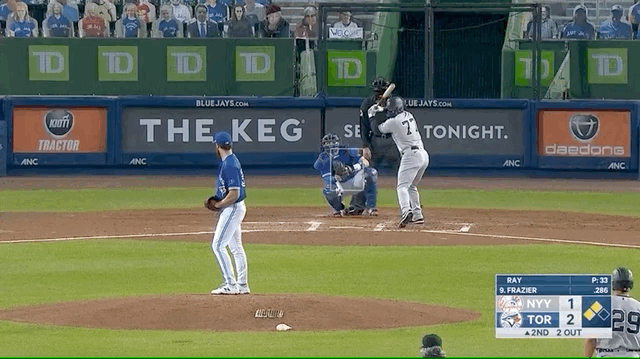
Before coming back into his kitchen with a fastball:
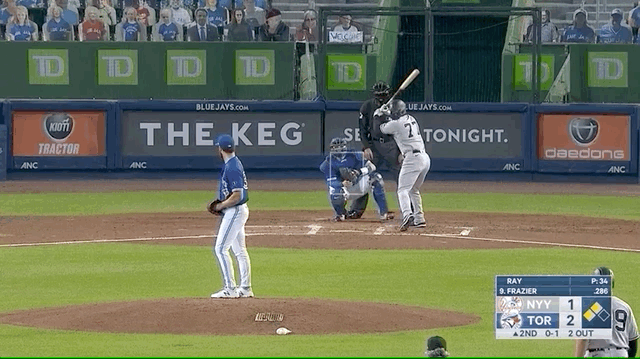
Or he can go the other way like he did to DJ LeMahieu, dotting a fastball on the inside edge:
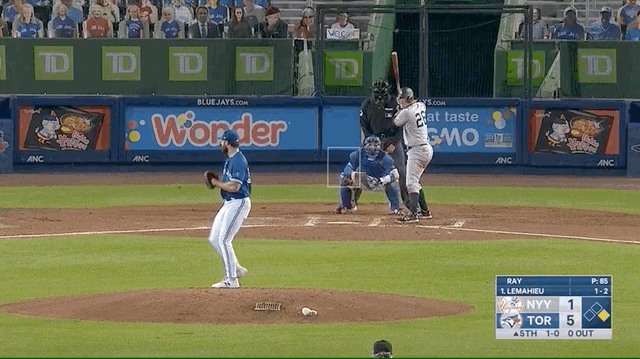
Before locating a slider away:

“It’s no secret that I like pitching in on righties. And the slider was really good, so we relied heavily on that to both sides of the plate,” Ray said. “It’s a pitch that, coming into the outing, I knew I was going to have to execute. They have a lot of really good hitters over there. And it was a pitch that I knew would pair really well with my fastball in. It would kind of open up that other side of the plate. It’s something that just elevates my game.”
If Ray’s pitching like he did against New York, it gives Montoyo a few different ways to use him in the wild-card series, whether Tampa’s heavy on either side of the platoon. And after Ray threw a bullpen Saturday, he’ll be available to pitch in Game 1. It’s probably not out of the question that he could start that game, especially if Hyun-jin Ryu is being saved for Game 2. He could also follow Shoemaker, Walker or an opener. No matter what he does, he’ll have been there before.
In 2017, while pitching for the Arizona Diamondbacks, Ray entered the National League wild-card game in the top of the fifth inning with his team trailing by two runs, making his first relief appearance in more than three years. He struck out the first two batters he faced, and ultimately allowed a run on two hits over 2.1 innings in a game the Diamondbacks went on to win. Not bad for his post-season debut.
“I’ve done it before and I’ve done it in pressure situations. Thankfully, I have that,” Ray says. “So, I’m here to do whatever I can to help the team win. Put up zeroes, pitch my game plan, do whatever I can to help us get to that end goal.”
Of course, Ray needs to be in the zone for any of it to work, and this season he hasn’t been in the zone nearly enough. He’s undergone a host of mechanical changes over the last 12 months in order to address just that, and the process is ongoing. Ray’s 6.1 BB/9 with the Blue Jays is certainly better than the 9 BB/9 he posted with the Diamondbacks. But it’s still way too high.
As a manager, you’re always playing with fire when it comes to Ray’s command, which is why his appearances in this series may not be particularly lengthy. But the Blue Jays don’t need them to be. The club just needs him to be effective in the specialized role they put him in, while putting pressure on Cash to make moves earlier than he may please.
“I feel like my arm angle is in a really good spot. I feel like my off-speed pitches are really good right now. My slider [vs. the Yankees] was about as good as its been in a while. I feel confident in everything right now,” Ray said. “I think confidence is key. It breeds success. So, I feel really good about where I’m at. And I’ll move forward and keep pushing.”



